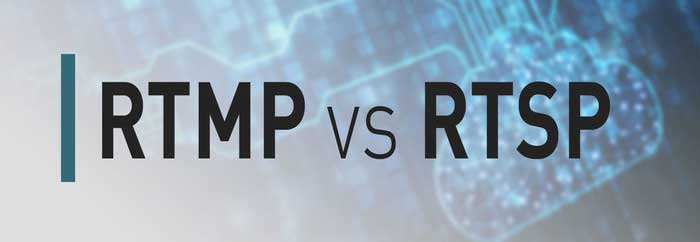Posted on 8/9/2019 by Vaddio Team
Many format and protocol arguments start the same way—a thing is hard to do (like streaming media) and someone cracks it in a proprietary way. They get the job done at a point in history when it’s well nigh impossible.
Others will look at that same problem and come to the justifiable conclusion that standards-based solutions are always better for everyone, though they may take longer to implement and may involve cat herding.
In an impatient market, these two approaches often co-exist. Proprietary standards advance the industry because they can quickly, sometimes boldly, demonstrate a paradigm—people can see and touch the future even if it must be within a controlled environment, a “walled garden” as you’ll often hear it called.
At the same time, valuable engineering and standards development pour into the problem, to try to solve it more formally and more openly for the presumed greater good. And without licensing fees and dual manufacturer legal red tape.
Over time, the distinctions between proprietary and open approaches often start to blur and converge. Technology is dynamic and mostly walled gardens are unsustainable unless you’re Apple. Many protocols and businesses that thrived as proprietary open up for many reasons--some carrot, some stick.
Such is the case, more or less, with RTMP vs. RTSP. At this point in time they share more similarities than differences. Both are application layer protocols used to control media streams—they do not do the actual transmission. Both support realtime interactive multimedia distribution. Both are alternatives to the stateless protocol HTTP.

In this case the history is important. In the early 1990s when it was hard to figure out streaming video and audio over limited hardware, Adobe’s proprietary RTMP (Real Time Messaging Protocol) used Flash and supercharged the rise of internet streaming.
RTSP (Real Time Streaming Protocol) started life as an open standard developed by Flash streaming rival RealNetworks, Netscape and Columbia University for the purpose of controlling streaming media servers over networks. RTSP was standardized by Multiparty Multimedia Session Control Working Group (MMUSIC WG) of the Internet Engineering Task Force (IETF) and published several times between 1998 and the present.
RTSP was utilized widely to set up communication and control among and between streaming endpoints, such as PTZ cameras and media servers. As it evolved, it enabled many implementations and many AV manufacturers are very familiar with its capabilities and have a long history utilizing it to advance the industry.
When Adobe released RTMP (now Open RTMP) in 2012, and when the internet gravitated away from plugins like Flash to plug-in-free streaming, the convergence of the two protocols as a practical matter continued. Engineers and designers utilized both protocols to advantage, especially in navigating increased demand for data about streaming sessions and interactivity such as instant messaging. In some cases, choices were made simply on comfort level or product roadmapping. For some applications RTSP is more mature, in part because so many engineers used it during the years when RTMP was closed. Regardless, it is safe to say that the market drove streaming, not the protocols.
And so here we are, as with many things, with legacy protocols that have history and installed bases and sprang from similar problem-solving needs in a time that is now 20 years in the past.
In those 20 years, other protocols have emerged, and as with many things, engineers in some ways yearn for a clean slate—a way to jettison history and start fresh with a new technical approach that everyone could agree on and which would better address where the market is now, at this moment in users’ lives.
In many ways RTMP and RTSP have arrived in the same place. As ecosystems continue to get more complex, manufacturers who are flexible, who work with FPGAs that are adaptable to a variety of ecosystems are at a real advantage. Likewise, manufacturers who can embrace emerging protocols such as NewTek’s NDI®, will play a crucial role as the AV Over IP ecosystem grows and expands across many types of media networks and applications. Legacy protocols are valuable but they get you only so far. Now, flexibility will build the next 20 years of history.
Check out these related Vaddio products with RTSP/RTMP streaming:

 All News
All News

